 |
 |
 |
 |
 |
 |
 |
 |
 |
 |
 |
One Windows is simply not enough! |
 |
|
 |
|
 |
 |
 |
 |
 |
Use HyperOs to Clone Backup and Run Windows |
|
 |
 |
|
|
 |
Why DDR SSDs are the next step |
|
|
In the last 25 years CPU speeds have increased by 1000x, hard disk capacities have increased by 1000x,
memory speeds have effectively increased by 500x, mobo bus data transfer speeds have increased by 500x
and floppy disks have been replaced by flash disks, which are 100,000x larger and 1000x faster than a 1.44MB floppy.
But hard disk access times and sustained transfer rates and IOPS have only increased by around 5x. So hard disk performance is the last bottleneck in the modern PC. In fact the modern PC has become a ludicrously overspecified mechanical hard disk controller.
Every component within it cycles at speeds faster than 200 MHz except the hard disk which cycles at 120 Hz (7200 rpm)
or 166 Hz (10,000 rpm) or 250 Hz (15,000 rpm).
There is presently only one way to fix this bottleneck. A Solid State DDR drive.
Please do not confuse flash SSDs with DDR SSDs. They are entirely different devices.
Sure they are both solid state, but then so is a lump of concrete.
You will not double the real world performance of your PC by buying a faster processor,
or a faster graphics card or a new motherboard. In many circumstances a large RAID system of the fastest hard disks will double overall system performance.
But to achieve an order of magnitude improvement in real world performance you have to tackle the bottleneck of mechanical hard disk latency, or indeed flash drive write latency, which is not much better.
The most effective way of doing this is with a HyperDrive5, which is truly the world's fastest internal SSD. There are flash drives with faster Sustained Transfer rates, their write latency is diabolical and flash drives do not perform to their quoted figures in the real world.
Intel and AMD and the memory companies and the PC magazines which earn advertising revenue from these companies will tell you that you should get a faster processor or a faster Memory stick or a faster Graphics card. But a typical Front Side Bus today goes at 800MHz with a 64bit memory word, which makes a 6400MB per second transfer rate (PC6400). Whereas your Hard Disk has a theoretical Max Transfer rate of around 80 MB per second (if it is a WD Raptor). And in the real world due to seek time delays it will actually be operating at between 10MB and 40MB per second. So your CPU is speaking to your memory at precisely 6400 MB per second because DDR is a Random Access and has a seek time measured in nanoseconds, whereas your Hard Disk is talking to your CPU at 10MB-40MB per second. So your HDD talks to your PC around 200x more slowly than your memory does.
That is the fundamental incompatibility in the modern PC.
Increasing the 6400MB per second figure is not going to help, when the bottleneck is the 10-40MB per second figure. The HyperDrive5 lifts that figure to around 160MB per second all the time, since it has an STR of 175MB/s Read and 145NB/s Write and as no seek time latency to speak of, being a random access device with a 10 microsecond access time. So adding a HyperDrive5 to your system will lift your HDD performance by 400%-1600% depending upon your circumstances. Buying a faster Processor or Memory stick will give you perhaps a 10%-20% real world performance improvement. The Hard drive is to a PC what speakers are to a HiFi. Running a Quad Core CPU from a Hard Disk is like running a Pink Floyd Stage Amplifier through a railway platform speaker!
For performance you must start with the Hard Drive.
The types of users who need DDR SSD performance are...
* Any real time business transaction system (business time is money)
* Any system where highly trained professional people sit in front of screens for hours (professional time is money).
* Any serious PC gamer
* Anyone who uses a PC more than one hour a week, whose time is worth more than £50 an hour
* Any system with a large database, any SQL performance database system
* Any network with more than 2 concurrent users, any heavily used webserver
Here are the SQL database performance figures from a large US customer who compared one
HyperDrive4 with an Areca RAID controller against 14 SATA Hard disks.
|
|
 |
SATA2 DDR2 HyperDrive5 64GB |
|
 |
Key Benefits |
|
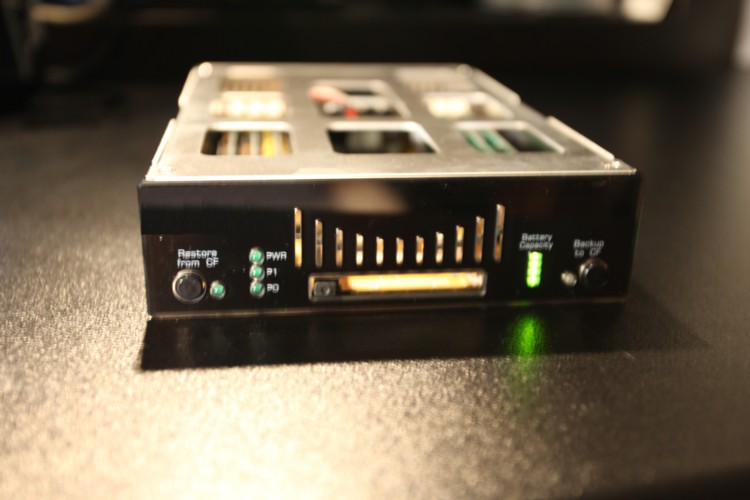
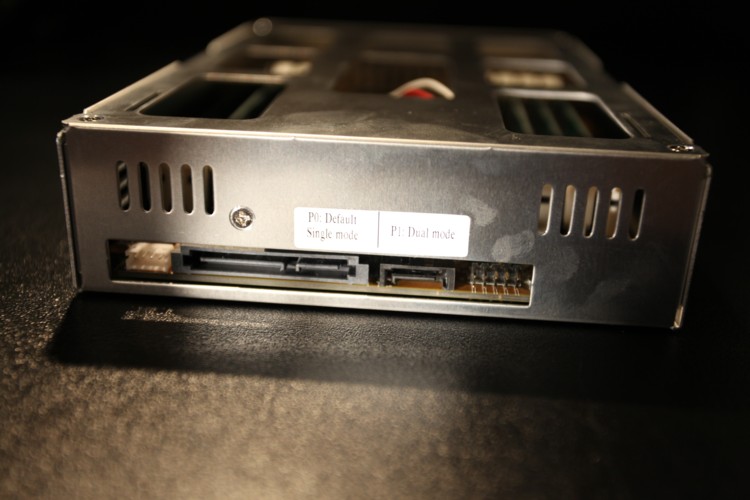
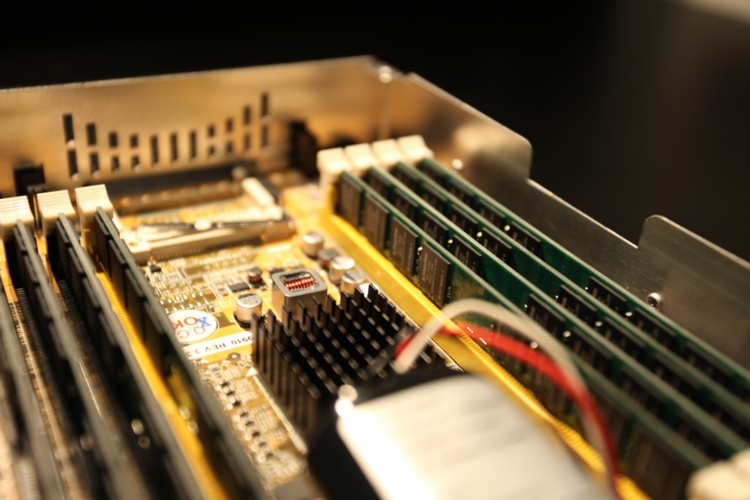
HyperDrive5 - 64GB max
£275 $399 (US)
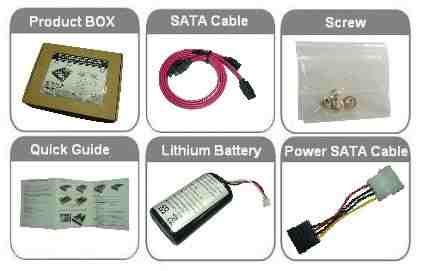
|
|
The 64GB SATA2 DDR2 HyperDrive5 is built around a custom ASIC and manufactured in Taiwan. Hence the great price!
Here are the features...
Takes 8x 240 pin DDR2 DIMMS from 2GB - 8GB.
2x SATA2 interface ports.
CD ROM Drive Form Factor.
175MB/s Read rate.
145MB/s Write rate.
59,000 IOPS. Hard disks do 200-300 IOPS (File Inputs or Outputs Per Second).
10 microsecond disk access time. Mechanical disks take 5-15 milliseconds.
It finds files 500x faster than the world's fastest mechanical SAS hard disk.
No drivers needed, connects like any other SATA HDD.
Boots Windows XP in 4 seconds!
Most operations become instant!
Formats Instantly!
Never needs to be defragged. It's Random Access!
Silent Solid State Disk, no moving parts, no NAND flash to wear out!
Printed User Guide
Compact Flash card backup port in case of long power outage.
Takes any UDMA capable CF card with capacity as big as installed DDR2.
Automatically backsup to CF in the event of power loss.
Automatically restores from CF in the event of power gain.
Lithium Battery 7.4V 2400mAH. Powers unit for 2-3 hours. 500 charge/discharge cycles.
External DC adaptor port for keeping data when PC is powered off.
LED indicators for power, activity and battery charge %.
The Drive has built in ECC so it can safely take cheap non ECC DDR2 DIMMs.
Designed to take any unbuffered non ECC 400-800MHz CL5/6 240 pin DRR2 DIMMs.
Tested with Kingston, Corsair, Qimonda, G.Skill, OCZ, Mustang.
DDR2 underclocked to reduce power consumption, enhance stability and prolong life.
UL Certified.
15 month RTB Warranty.
MTBF of underclocked DDR2 is several generations (a lot longer than our financial system!)
100% secure file deletion if required.
The simplest and cheapest way to get mainframe performance from your PC.
A $499 notebook with an external SATA HyperDrive5 will be over 3x faster than a $2000 desktop at booting and clicking around the desktop and opening applications and all other IO intensive operations. But it only requires 10% of the power that a desktop PC requires! If your laptop does not have an eSATA port you can buy an express card adapter which gives you eSATA capability and an eSATA to SATA lead to connect it to the HyperDrive5.
Use HyperOS 2009SE SuperGeek to clone Windows from your hard disk to your HyperDrive and then surf the net entirely on your HyperDrive and do not use the lithium battery backup or the external DC adaptor. Then whatever virus or spyware or cookies or malware or zombieware or other clutter you accrue during the session will be forensically wiped at the end of the session by powering down your PC. So each time you surf the net you start anew. Only a DDR SSD can do this. Hard Disks and Flash Disks retain data even after that data has been deleted and overwritten several times.
Suggested Configurations...
Simply install Windows and run it on the HyperDrive5 if you like. It will install very quickly - around 8 minutes for XPSP2. In this configuration the HyperDrive should be primary and bootable. You would attach the HDD as a second primary bootable device but choose to boot from the HyperDrive in the BIOS. With this configuration you should use the DC adapter so that the HD5 does not lose data if the PC is powered off.
Alternatively add the HyperDrive5 as a second SATA disk. Then it can act as a photoshop scratch disk or a general high IOPS work space. You can achieve instant Windows in this configuration by using HyperOs 2009SE Geek or SuperGeek to clone a system from the HDD to the HD5. For true RAM performance please ensure that the paging file is running on the HyperDrive and not on the boot drive. Then you will get an incredibly fast Windows boot up and an instant desktop. The PC will still be booting from the Hard disk but will only look at that drive for the MBR and the boot files, which will not delay the boot significantly.
Thereagain you can use a full disk cloning program and clone your main system onto the HyperDrive so long as your main system is small enough. Then either connect your HyperDrive as a second SATA disk or if you like as the first SATA disk and move your HDD to the second SATA port. You can then choose which one to boot from using either the BIOS or the Windows boot menu, or using HyperOs 2009SE Geek or SuperGeek if you have them installed.
|
|
 |
HyperDrive5M (48GB Max) |
|
 |
Specification |
|
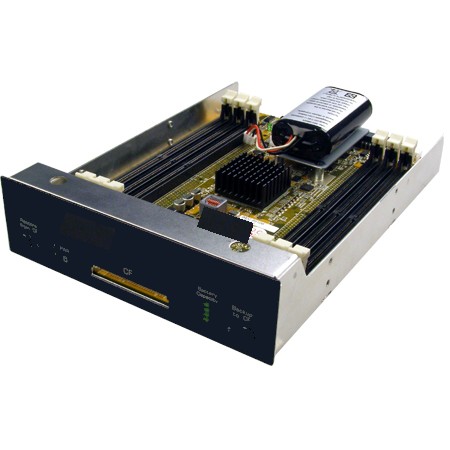
HyperDrive5M - 48GB max
£189.00 $269.00
|
|
3/4 size mini HyperDrive5
6 DIMM slots giving 48GB Max capacity
Silent and very low power. CD ROM Drive form factor.
Same performance as its big brother the 8 DIMM slot 64GB HD5.
Instant computing for £189 $269.00 + DDR2
No brainer for performance enhancement.
Spend an extra £300 $450.00 on your CPU and get a 5% performance improvement.
Spend an extra £300 $450.00 on an HD5M with RAM and get a 500% performance improvement.
This thing also finds files 800x faster than a WD Raptor. Yes that is 800x faster!
Has one SATA2 port for connection to your Motherboard.
Star Trek Technology at Walmart Pricing!
|
|
 |
2GB NON-ECC DDR2 DIMMS for HyperDrive5 |
|
 |
Information |
|
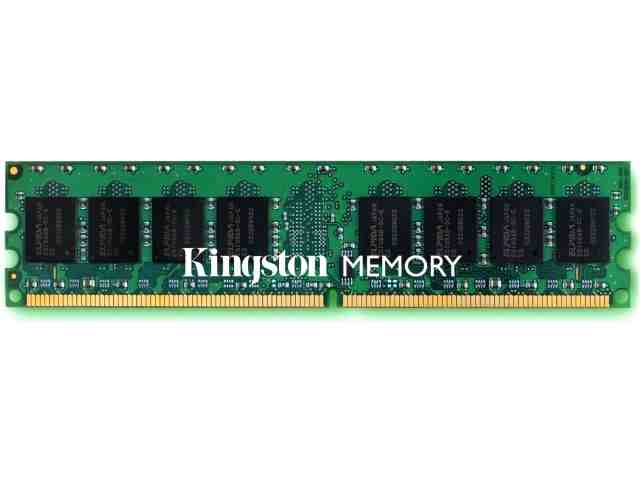
1 Module £19.95 $29.95
6 Module Pack £112.95 $169.95
8 Module Pack £149.95 $224.95
|
|
KVR667D2N5/2G or OCZ2G8004GK or equivalent approved DDR2
Takes consumer priced unbuffered non ECC 240 pin DDR2 DIMMs 400-800MHz CL5 or CL6
We have tested and approved Kingston, Corsair, OCZ, G.Skill, Qimonda, Mustang
We recommend KVR667D2N5/2G OCZ2G8004GK OCZ2P8004GK for the HyperDrive5
|
|
 |
4GB NON-ECC DDR2 DIMMS for HyperDrive5 |
|
 |
Information |
|

1 Module £90 $135
6 Module Pack £520 $780
8 Module Pack £680 $1020
|
|
KVR667D2N5/4G or OCZ2G8008GK or equivalent approved DDR2
Takes consumer priced unbuffered non ECC 240 pin DDR2 DIMMs 400-800MHz CL5 or CL6
We have tested and approved Kingston, Corsair, OCZ, G.Skill, Qimonda, Mustang
We recommend the Kingston ValueRAM KVR800D2N6/4G or KVR667D2N5/4G for the HyperDrive5
We also recommend the G.Skill 6400CL6S-4GBMQ or 6400CL6D-8GBMQ or 6400CL6Q-16GBMQ.
We also recommend the OCZ OCZ2G8008GK or OCZ2VU8008GK or OCZ2P8008GK.
The 8GB DDR2 DIMMs are not consumer priced yet!!
|
|
 |
RiDATA 233x Compact Flash Card for HyperDrive5 |
|
 |
Information |
|
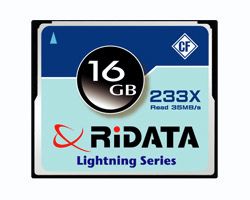
16GB card £49.95 $75.00
32GB card £99.95 $149.00
|
|
16GB and 32GB UDMA 233x Compact Flash Cards.
Will fully back up a HyperDrive5 with 16GB and 32GB of non ECC DDR2 installed.
Backs up at around 35 MB/s so it takes 8 mins for a 16GB and 16 mins for a 32GB backup.
The HyperDrive has a multicolour LED indicating the status and progress of the backup.
With the CF card in place, the HyperDrive will auto back up on main power loss and auto restore on main power regain.
|
|
 |
External DC Adapter for HyperDrive5 |
|
 |
Information |
|
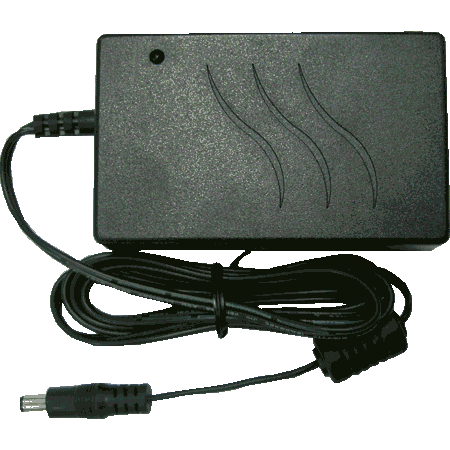
£20.00 $30.00 |
|
External DC Adapter for HyperDrive5
The adapter keeps the power to the HyperDrive on when you turn the power to your PC off.
It makes the HyperDrive5 non volatile.
|
|
|
|
|
 © 2003
© 2003